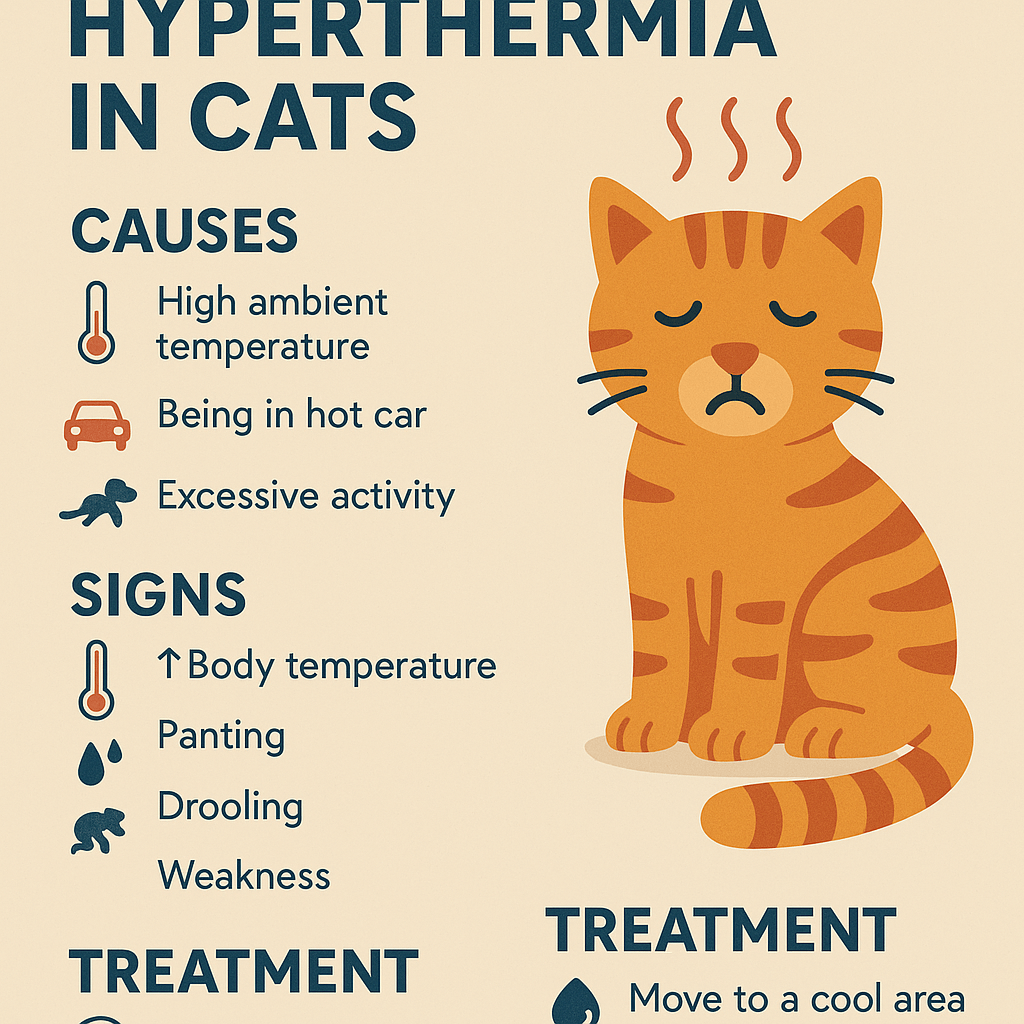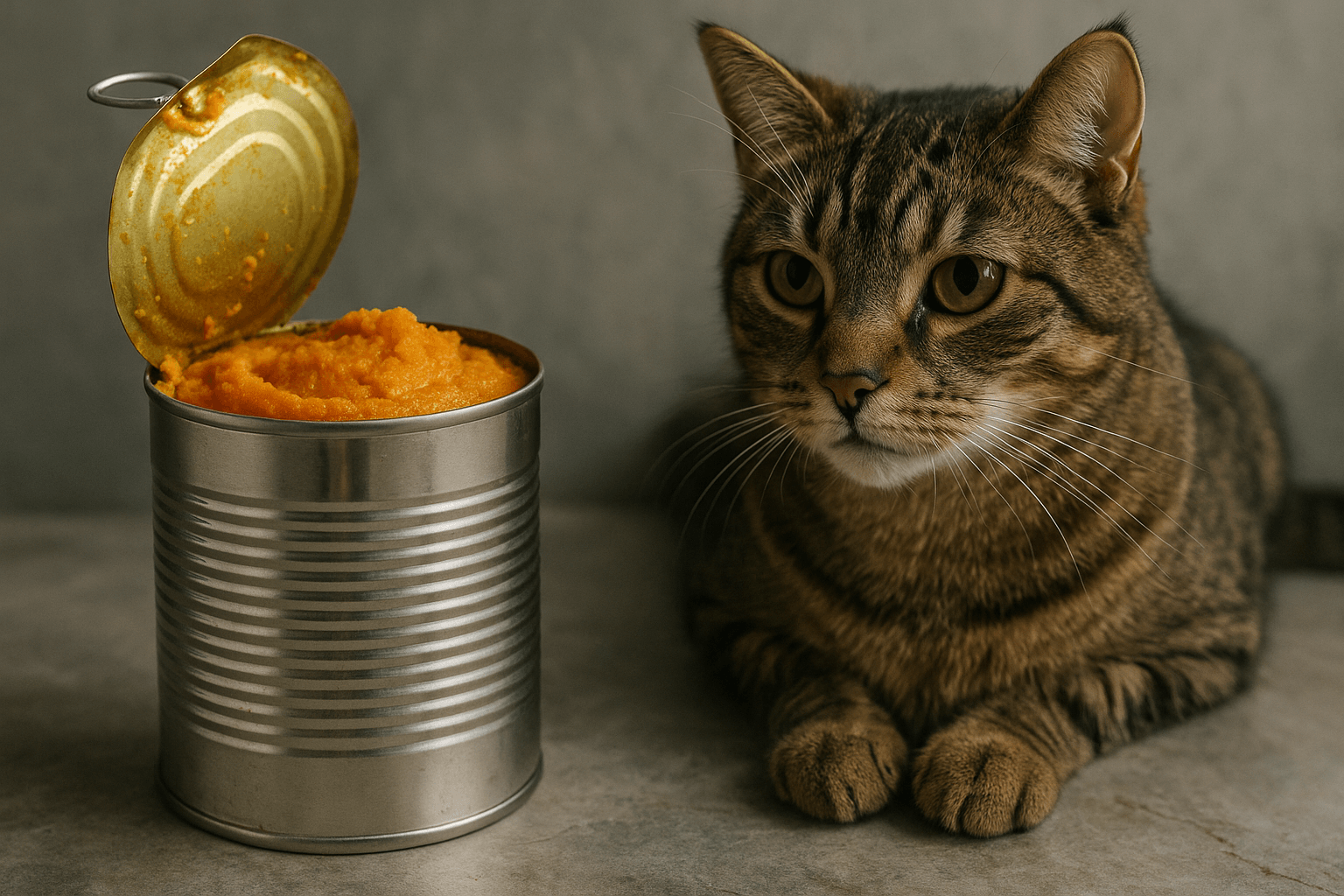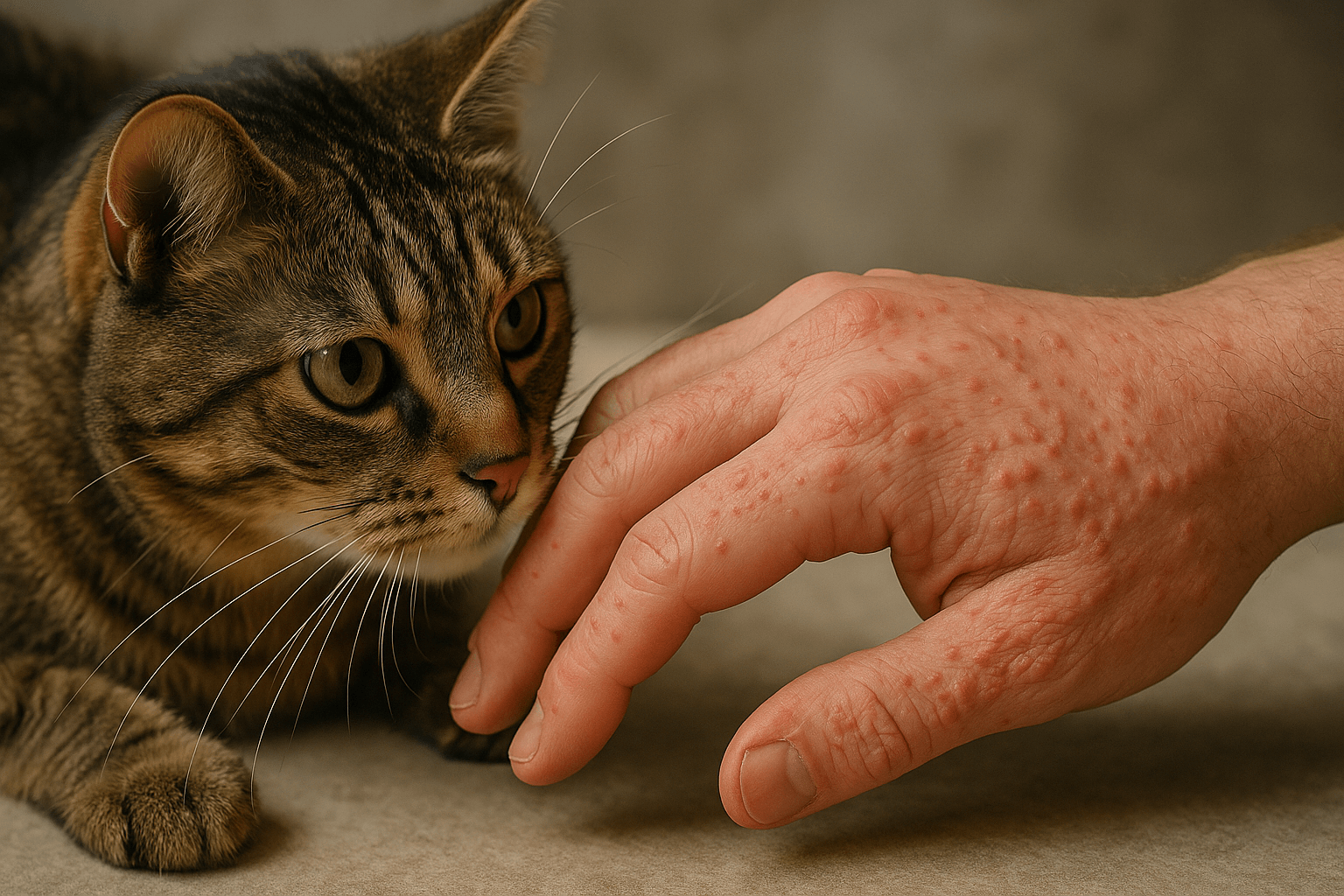Hyperthermia in Cats: What Every Pet Owner Should Know
Hyperthermia, or overheating, is a serious and potentially life-threatening condition that can affect cats when their body temperature rises above normal levels. Unlike dogs, cats are less likely to pant or show obvious signs of discomfort in warm environments, making hyperthermia harder to detect until it becomes severe. Whether caused by high temperatures, excessive exercise, or underlying health conditions, hyperthermia requires immediate attention to prevent complications such as organ failure or heatstroke. In this blog post, we’ll explore the causes, symptoms, and treatment options for hyperthermia in cats, along with practical tips to keep your feline friend safe during hot weather.
Expert Opinion on Hypothermia in Cats
“Hypothermia is more common in kittens, senior cats, and cats who go outdoors. A cat of any breed can develop hypothermia, though healthy cats usually don’t develop this condition.”
Common Causes of Hyperthermia in Cats
Understanding what leads to hyperthermia in cats is the first step in preventing this dangerous condition. Several factors can contribute to an elevated body temperature, especially during warmer months.
High Environmental Temperatures:
Cats exposed to extreme heat without access to shade or cool areas are at significant risk of overheating.Lack of Ventilation:
Poor airflow in confined spaces, such as cars or small rooms, can cause a cat’s body temperature to rise rapidly.Excessive Physical Activity:
Overexertion during play or exercise on hot days can overwhelm a cat’s ability to regulate its temperature.Underlying Health Conditions:
Illnesses like obesity, heart disease, or respiratory disorders can impair a cat’s natural cooling mechanisms.Dehydration:
Insufficient water intake reduces the body’s ability to cool itself through evaporation and sweating (via paw pads).
By identifying these potential triggers, you can take proactive steps to minimize your cat’s risk of developing hyperthermia.

Signs and Symptoms of Hyperthermia in Cats
Recognizing the early signs of hyperthermia is crucial for timely intervention. While cats may not always vocalize their discomfort, certain behaviors and physical changes can signal overheating.
Excessive Panting:
Unlike dogs, panting in cats is uncommon and often indicates distress caused by heat.Rapid Breathing or Difficulty Breathing:
Labored breathing or open-mouthed panting can suggest your cat is struggling to cool down.Lethargy or Weakness:
A cat showing unusual tiredness or reluctance to move may be experiencing heat-related stress.Bright Red Gums or Tongue:
Discoloration of the gums or tongue can indicate increased blood flow due to overheating.Vomiting or Diarrhea:
Gastrointestinal upset may occur as the body attempts to cope with rising temperatures.
If you notice any of these symptoms, it’s essential to act quickly to prevent further complications.
Check this guide 👉How Long Does a Cat Cold Last? Best 7 Expert Tips!
Check this guide 👉Understanding Cat Cold Treatment: Best 7 Health Tips!
Check this guide 👉How Cold Is Too Cold for Cats? Best 7 Tips!
Prevention Tips for Hyperthermia | Immediate Actions if Hyperthermia Occurs |
|---|---|
Keep your home well-ventilated | Move the cat to a cooler area immediately |
Provide fresh water at all times | Dampen their fur with cool (not cold) water |
Avoid leaving cats in parked cars | Offer small sips of water to rehydrate |
Limit outdoor time during peak heat hours | Monitor their breathing and behavior |
Use fans or air conditioning | Contact a veterinarian for professional care |
How to Treat Hyperthermia in Cats Safely
If you suspect your cat is suffering from hyperthermia, prompt action is critical. Follow these steps to stabilize your pet before seeking veterinary assistance.
Move Them to a Cooler Area:
Relocate your cat to a shaded, air-conditioned, or well-ventilated space to reduce exposure to heat.Cool Their Body Gradually:
Use lukewarm water or damp towels to lower their body temperature slowly—avoid ice-cold water, which can shock the system.Offer Water Carefully:
Encourage your cat to drink small amounts of cool water, but don’t force them if they’re unwilling.Monitor Their Temperature:
If possible, use a rectal thermometer to check their temperature (normal range: 101–102.5°F). Stop cooling efforts once it reaches 103°F.Seek Veterinary Help Immediately:
Even if your cat seems stable, professional evaluation is necessary to rule out internal damage or complications.
Taking these steps can help stabilize your cat while ensuring they receive proper medical care.
Long-Term Effects of Untreated Hyperthermia
If left untreated, hyperthermia can lead to severe and lasting consequences for your cat’s health. Understanding these risks underscores the importance of addressing overheating promptly.
Organ Damage:
Prolonged elevated body temperatures can harm vital organs like the kidneys, liver, and brain.Heatstroke Complications:
Heatstroke, a severe form of hyperthermia, can result in seizures, coma, or death if not treated immediately.Weakened Immune System:
Chronic overheating weakens the immune system, making cats more susceptible to infections and illnesses.Behavioral Changes:
Cats recovering from hyperthermia may exhibit fear, anxiety, or aggression due to trauma associated with the experience.Reduced Lifespan:
Repeated episodes of hyperthermia can shorten a cat’s lifespan by placing undue stress on their body systems.
Preventing hyperthermia ensures your cat enjoys a long, healthy, and comfortable life free from unnecessary risks.
Preventive Measures for Outdoor Cats
Outdoor cats face unique challenges in avoiding hyperthermia, particularly during summer months. Taking extra precautions can help keep them safe and healthy.
Provide Shaded Areas:
Ensure there are shaded spots in your yard where your cat can escape direct sunlight.Limit Outdoor Time:
Restrict outdoor activities during peak heat hours (typically 10 a.m. to 4 p.m.).Install Cooling Mats:
Place cooling mats or damp cloths in accessible areas for your cat to lie on.Check Local Weather Alerts:
Stay informed about extreme heat warnings and adjust your cat’s routine accordingly.Supervise Playtime:
Monitor outdoor play sessions to prevent overexertion in hot weather.
With these measures, outdoor cats can enjoy fresh air without risking overheating.
Recognizing Risk Factors in Senior Cats
Senior cats are more vulnerable to hyperthermia due to age-related changes in their bodies. Identifying these risk factors helps caregivers provide tailored care.
Decreased Mobility:
Older cats may struggle to seek cooler areas, increasing their risk of overheating.Chronic Health Conditions:
Diseases like arthritis or kidney failure impair thermoregulation abilities.Weight Gain or Obesity:
Excess weight makes it harder for senior cats to dissipate heat efficiently.Reduced Thirst Drive:
Aging cats may forget to drink enough water, leading to dehydration.Medications That Affect Thermoregulation:
Certain medications can interfere with a cat’s ability to regulate body temperature.
By addressing these vulnerabilities, you can better protect your senior cat from hyperthermia.
Creating a Safe Indoor Environment
Indoor cats rely on their owners to maintain a safe and comfortable living space, especially during hot weather. These tips can help create an ideal environment for your feline friend.
Use Fans or Air Conditioning:
Keep your home cool by using fans or running the air conditioner during heatwaves.Close Curtains During Peak Hours:
Blocking direct sunlight reduces indoor temperatures significantly.Place Water Bowls Strategically:
Position multiple water bowls around the house to encourage hydration.Invest in Cooling Products:
Cooling mats, tiles, or beds can provide relief for overheated cats.Minimize Stressful Activities:
Avoid activities that could overheat your cat, such as vigorous play or grooming under hot lights.
A thoughtfully designed indoor environment keeps your cat cool, calm, and content year-round.
Frequently Asked Questions About Hyperthermia in Cats
What is considered a normal body temperature for cats?
A cat’s normal body temperature ranges between 101°F and 102.5°F (38.3°C–39.2°C).
Can indoor cats get hyperthermia?
Yes, indoor cats can overheat if exposed to high temperatures, poor ventilation, or dehydration.
Is hyperthermia the same as heatstroke?
No, hyperthermia refers to elevated body temperature, while heatstroke is a severe, life-threatening form of hyperthermia.
How can I tell if my cat is dehydrated?
Signs include dry gums, sunken eyes, lethargy, and loss of skin elasticity.
Should I use ice packs to cool my cat?
No, ice packs can cause vasoconstriction, worsening hyperthermia. Use lukewarm water instead.
Protecting Your Cat from Hyperthermia
Hyperthermia is a serious condition that demands vigilance and quick action to protect your beloved feline companion. By understanding its causes, recognizing early warning signs, and implementing preventive measures, you can ensure your cat stays safe and comfortable, even during the hottest months. Remember, your cat relies on you to create a secure environment where they can thrive. With knowledge, preparation, and love, you can safeguard your furry friend against the dangers of overheating and enjoy many happy years together.
Canned Pumpkin for Cat Diarrhea: Best 7 Expert Tips! Natural remedy to firm stools, soothe upset bellies, and support gut health safely.
Can a Cat Give You Scabies? Best 7 Expert Tips! Discover the truth about feline mites, human skin risks, and how to protect yourself—without panic.
Cat Flea vs Human Flea: Best 7 Expert Tips! Discover the truth about bites, species, and how to eliminate infestations for good.
Weird Cat Behaviors: Best 7 Expert Tips! Discover why cats do strange things—and how to understand, not punish, their instincts for a happier home.




